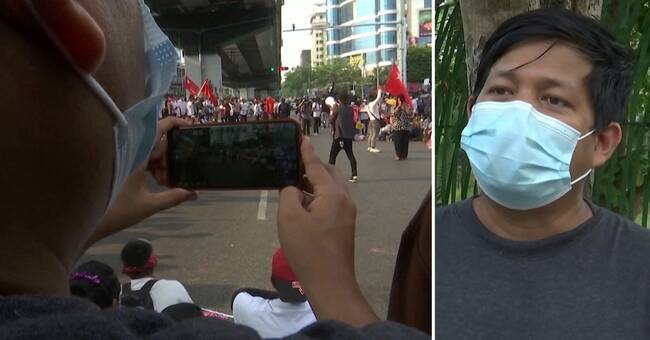The military junta's increasingly tough grip on Myanmar's media industry has opened up a new kind of journalism in the country.
Many journalists use social media to reach out with their reporting, and clumsy cameras have been replaced by livestreaming mobile phones.
- Through the live broadcasts, the demonstrators get to know where the police and the military are, how to avoid them and what they should bring to the demonstrations, says Thar Lon Zaung Htet, one of all journalists who have switched to a more mobile way of working.
When the military took power a few weeks ago, he rushed to the news agency where he usually works to get equipment.
Since then, he has not returned.
Reporting from the protests is not always easy, largely due to the military junta's decision to turn off Internet access during the nights.
Thar Lon Zaung Htet says that many people use Thai SIM cards to access the internet when Myanmar's network is turned off.
Although the situation in Myanmar has forced creative solutions for journalism, Thar Lon Zaung Htet believes that the live protests can play an important role when established media are silenced.
The main thing is that the message comes out, he says.
- Journalists and citizen journalists publish online in every way they can.
The important thing is to show the world what is happening in Myanmar.

